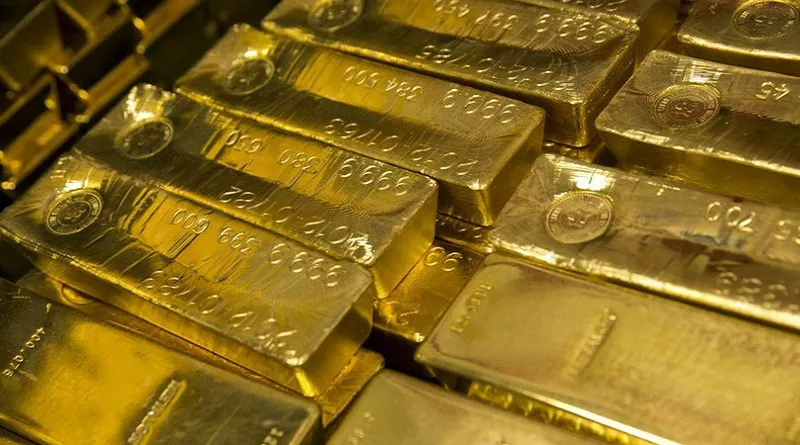In recent years, the global financial landscape has witnessed a remarkable and sustained increase in gold prices, leaving investors and economists intrigued by the underlying factors driving this surge. Traditionally regarded as a safe-haven asset, gold has historically exhibited a tendency to appreciate during times of economic uncertainty. However, the current surge in gold prices is not solely attributable to traditional drivers; a complex interplay of geopolitical, economic, and market-specific dynamics has contributed to this trend. This article delves into the multifaceted reasons behind the steady rise in gold prices, providing insights into the broader economic context and implications.
Economic Uncertainty
One of the primary drivers behind the increase in gold prices is economic uncertainty. The global economy has been marred by unprecedented events, including the COVID-19 pandemic, trade tensions, and geopolitical conflicts. These uncertainties have eroded investor confidence in traditional assets, leading to a flight to safety and a surge in demand for gold. Investors perceive gold as a hedge against economic volatility, as its value tends to remain relatively stable when compared to stocks and fiat currencies during tumultuous times.
Monetary Policy and Inflation
Central banks worldwide have responded to economic challenges with accommodative monetary policies, including low interest rates and extensive quantitative easing. While these measures are intended to stimulate economic growth, they can also lead to concerns about inflation. Inflation erodes the value of fiat currencies, making gold an attractive store of value. Investors often turn to gold as a safeguard against potential currency devaluation, which can further drive up demand and consequently boost its price.
Geopolitical Tensions
Geopolitical tensions have a profound impact on investor sentiment and risk perception. Heightened political uncertainties, such as trade disputes, sanctions, and diplomatic conflicts, can result in increased demand for safe-haven assets like gold. The prospect of these conflicts escalating can lead investors to seek refuge in assets that historically demonstrate resilience in turbulent times.
Negative Real Yields
The relationship between gold prices and real yields, adjusted for inflation, is crucial in understanding its appeal to investors. When real yields on government bonds turn negative, as they have in many economies recently, the opportunity cost of holding gold decreases. Investors are less likely to favor bonds that offer little to no return after accounting for inflation, making non-yielding assets like gold more attractive in comparison.
Technological Advancements in Gold Trading
Technological advancements have transformed the landscape of gold trading. The rise of digital platforms and the proliferation of exchange-traded funds (ETFs) have democratized access to gold markets. These innovations have enabled retail investors to participate in gold trading without the need to physically possess the metal. The ease of trading through these platforms has contributed to increased liquidity and demand, potentially exerting upward pressure on gold prices.
Supply Constraints
Gold is a finite resource, and mining operations are subject to various challenges, including regulatory hurdles, labor issues, and environmental concerns. Additionally, the discovery of new gold deposits has become increasingly rare. As supply constraints mount, the existing stock of gold becomes more valuable. The combination of limited supply growth and rising demand can result in higher prices.
Cultural and Religious Significance
Gold holds significant cultural and religious value in many societies. It is used in jewelry, religious artifacts, and traditional ceremonies. As incomes rise in emerging economies, particularly in Asia, there is a growing demand for gold for ornamental and cultural purposes. This demand can contribute to increased pressure on the available supply, leading to an uptick in prices.
Behavioral Factors
Investor behavior plays a vital role in determining the direction of gold prices. The fear of missing out (FOMO) on potential gains, especially during periods of rapid price appreciation, can lead to herd behavior and speculative buying. Additionally, the anchoring bias, wherein investors use previous high prices as reference points, can create psychological support for higher gold prices.
Conclusion
The sustained increase in gold prices is a confluence of diverse factors, each contributing its unique influence to the overall trend. Economic uncertainty, driven by events like the COVID-19 pandemic, alongside accommodative monetary policies and geopolitical tensions, has spurred demand for safe-haven assets. Negative real yields and technological advancements in trading have further accentuated gold’s attractiveness. Supply constraints and cultural significance add additional layers to the complex equation.
As the global economic landscape continues to evolve, so too will the drivers of gold prices. Investors and policymakers must remain vigilant in monitoring these dynamics to make informed decisions. Whether gold’s current trajectory will persist or undergo significant shifts remains uncertain, but a comprehensive understanding of the factors at play is essential for navigating the complexities of the financial markets.


